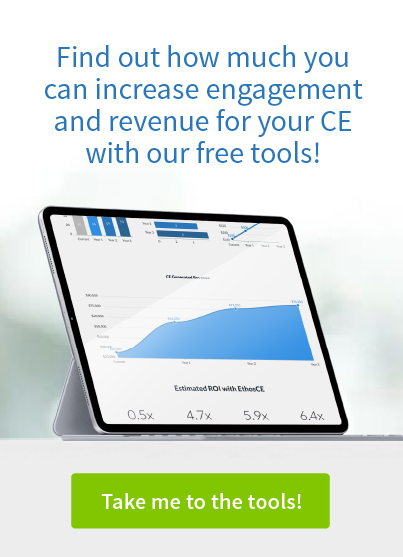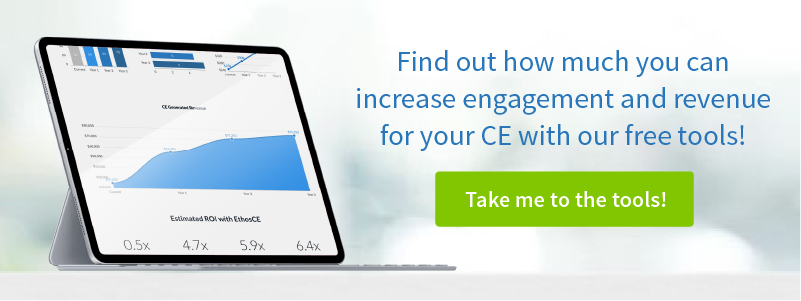Getting all the Credit: Storing Your Members’ Learning Records in an Association LMS
Every now and then we like to count up how many users and credits are stored in EthosCE. In our most most recent count, there were nearly 6 million credits stored in EthosCE and almost half a million users! For our team, those numbers are exciting. For our end users those numbers represent many successful training and compliance achievements. But not all that learning happens in the LMS.
Of the 6 million credits stored in EthosCE, some of those records come from other systems and have been imported, either via a data migration or from a third-party system such as an association management system (AMS). It’s no accident that those credits are stored in EthosCE: When an association implements our LMS, we work to carefully plan a strategy for integrating data sources that improve member value.
Back up the truck and load up your LMS with data
Being able to display all of an association member’s learning history should be a key goal of an LMS implementation. To meet that goal, think about the following data sources and make a list of each database, file or spreadsheet where data is stored. Consider all sources of education and training such as simulations, journals and meetings.
- self-reported credits
- credits stored in third-party or vendors’ systems
- credits stored in the AMS
- credits stored with other training organizations working with the association
- credits stored with local chapters
- certificates
Once all the data sources have been identified, the next exercise is to examine that data and map the fields in the sources to the fields needed for the LMS. To map the data, first create a data dictionary for the fields expected by the LMS. A data dictionary should include:
- name of each field
- the datatype of each field, including name and length, for example ISO-8601, or decimal (6.2)
- the accepted values for each field if applicable, for example, member, non-member, retired member, etc.
- notes describing each field and how it is used
- if the field is required
Then, compare the data sources to the dictionary. Look for the following issues that may need to be addressed.
- What gaps exist between the data fields required by the LMS and the data sources?
- Are the data values and data types consistent across the data sources?
- Is the data normalized?
- Are there duplicates?
- Can the learning records or credits be uniquely identified?
Cleaning up data is tricky, but we recommend that only clean data should be imported into the LMS. Your association’s customer support team will be on the receiving end of calls from unhappy members if inaccurate data is exposed to the members. In some cases it may be better to opt out of importing historical records and start afresh. Workarounds may include a form for members to request learning records.
Let’s assume the happy-day path: you have clean data or you’ve cleaned it up. How should you get it into the LMS? Considerations include:
- Is this a one-time import, or will it regularly or periodically repeat?
- If repeating, can a feed or web service be created from the AMS or other source to the LMS?
- If a manual import, who can import the feed?
- Is there a business process for determining what data should be imported?
When implementing an automated feed from the AMS or other data source to the LMS, it’s worth considering whether or not this should be a two-way feed. Is there a business need to export the data earned in the LMS to the AMS? Many times the answer is no, but your customer service team may need all the member data in a single database. To implement such a business requirement, a feed can be created to send records earned in the LMS back to the AMS or other data storage location.
At EthosCE, those 6 million credits mean we’ve got a lot of experience in integrating and importing member records. We’re here to help, whether you go with EthosCE or another learning management system. Contact us to learn more about our LMS consulting and implementation services.
 We're now part of the Cadmium product suite! Learn more
We're now part of the Cadmium product suite! Learn more 



[…] of, or prior to, an LMS integration for associations. Process improvement, technology strategy, systems and business analysis, revenue generation consulting for continuing education and tailored LMS training are all […]
Comments are closed.